Reclaimed Cobblestones
Granite Cobblestones
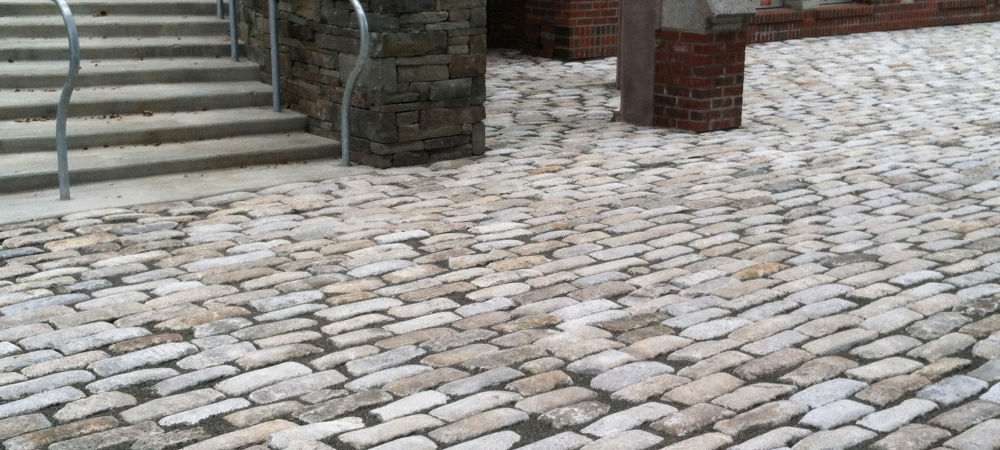
Old world Granite Cobblestones bring a historical feel to this plaza. (more pictures)
Reclaimed Granite Cobblestones
From their origins in Europe to their decades of use in American streets, our granite cobblestones have a fascinating legacy - and a bright future ahead. If you’re hoping to achieve a rustic, classic look for your next project, look no further than our salvaged antique cobbles.
Most granite cobbles in the America were actually made in Europe. During the 19th and 20th centuries, cobblestones were frequently used as ballast on ships crossing the Atlantic and on canal boats traveling west, which is why you’ll find them most often today in port cities.
Our Granite Cobblestones include:
- Regulation Granite Cobbles | Download Product Cut Sheet
Also known as Belgian block, these old stones are available is a rich array of colors. Some are classic gray, while others are a beautiful mix of shades. Regulation stones are worn with a relatively flat top. Our creative customers have used this material for driveways, roadways, landscaping in small yards and palatial estates, and even rooftop patios. - Jumbo Granite Cobbles | Download Product Cut Sheet
A pallet comes with a range of sizes, from 10-15 inches long, 4-6 inches wide and 7-8 inches high. Their large size makes them well suited for curbing, while their height allows you to bury a few inches below grade and still maintain 4-5 inches above grade for more strength and resilience over time. Jumbo cobbles tend to have a more rounded top than regulation stones and produce wider joints. Customers often lay them on their sides, so the original split stone face is exposed and the stones cover more area. With our reclaimed jumbo cobbles, customers have created gorgeous driveways, loose walkways and one-of-a-kind edging for plant beds. - Half Jumbo Cobbles | Download Product Cut Sheet
As steel-wheeled carts wore down cobblestones, their surface became smooth and slippery. Half jumbo cobbles are worn jumbos that were split vertically and placed back in the road with the freshly split surface facing up for better traction. Often these cobbles have two smooth faces, allowing you to install them smooth side up or on their sides to expose the original split face.
To discover more about the history of our reclaimed street pavers, visit the History section below.
View Gallery Product History Request Pricing
View Reclaimed Granite Cobblestones in Action!
-
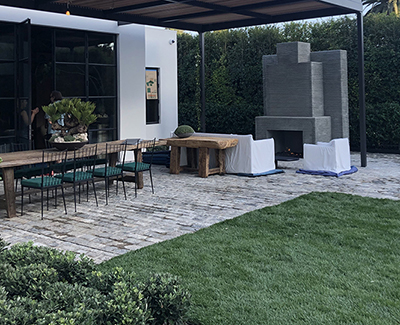 VIEW LARGER
VIEW LARGERRegulation Cobblestones
Reclaimed regulation granite cobblestone patio in California -
 VIEW LARGER
VIEW LARGERRegulation Cobblestones
Entry steps created using salvaged regulation granite cobbles -
 VIEW LARGER
VIEW LARGERJumbo Cobblestones
These salvaged Jumbo Granite Cobblestones create a driveway to remember -
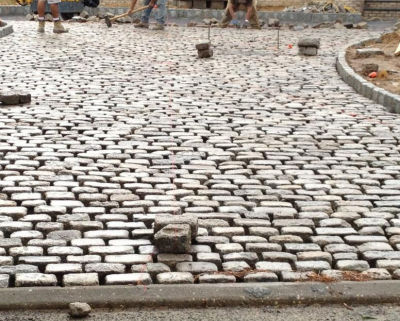 VIEW LARGER
VIEW LARGERJumbo Cobblestones
Installation of the used, antique cobblestones is part of the reclaiming experience -
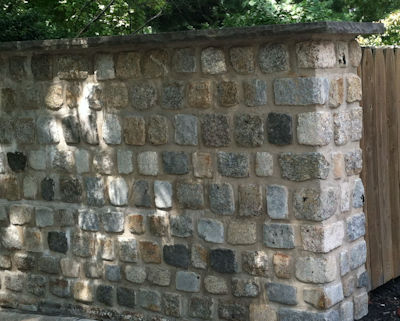 VIEW LARGER
VIEW LARGERRegulation Cobblestones
When split open the stones often uncover a wider color range than the patina on the exterior would reveal -
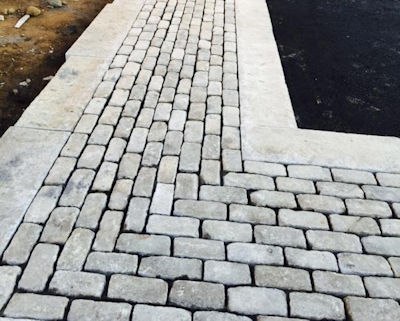 VIEW LARGER
VIEW LARGERRegulation Cobblestones
A stunning driveway border created from old granite cobblestones and reclaimed curbing -
 VIEW LARGER
VIEW LARGERJumbo Cobblestones
Used granite cobbles laid on their side make a classic garden path -
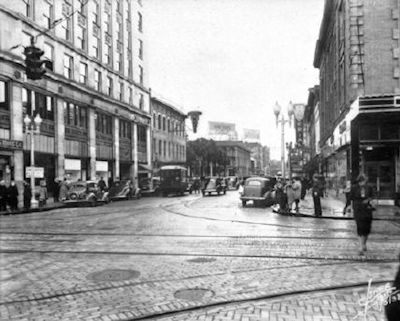 VIEW LARGER
VIEW LARGERRegulation Cobblestones
When cobblestones and trollies ruled the streets -
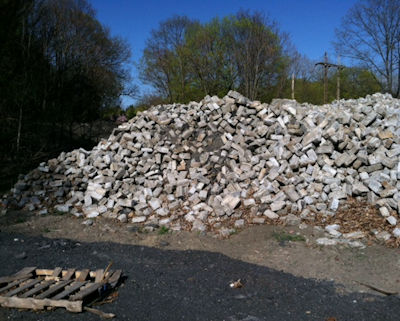 VIEW LARGER
VIEW LARGERJumbo Cobblestones
Salvaged granite cobblestone before sorting and palletizing -
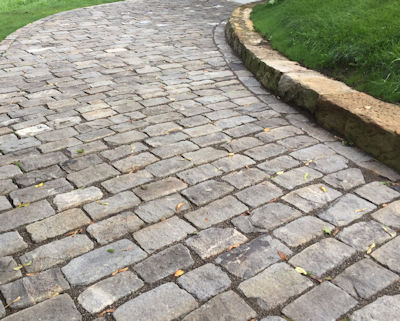 VIEW LARGER
VIEW LARGERJumbo Cobblestones
Reclaimed stone laid on side for a rustic cobblestone driveway -
 VIEW LARGER
VIEW LARGERHalf Jumbo Cobblestones
Random pattern gives an old world feel to this permeable stone driveway -
 VIEW LARGER
VIEW LARGERHalf Jumbo Cobblestones
Mortarized installation of stone driveway -
 VIEW LARGER
VIEW LARGERRegulation Cobblestones
The consistent size and pattern of this cobblestone installation provides a more formal feel -
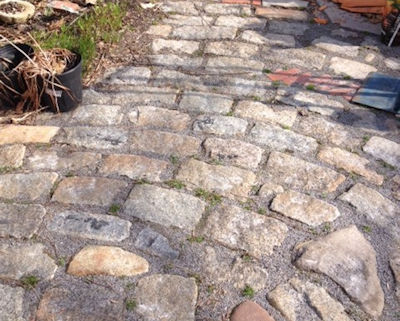 VIEW LARGER
VIEW LARGERJumbo Cobblestones
Rustic garden path created by laying antique cobblestones on their side -
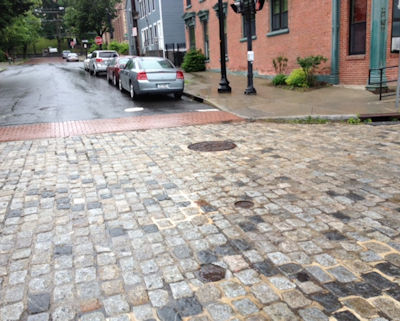 VIEW LARGER
VIEW LARGERRegulation Cobblestones
Historic district streetscape enhanced by antique cobblestone paving -
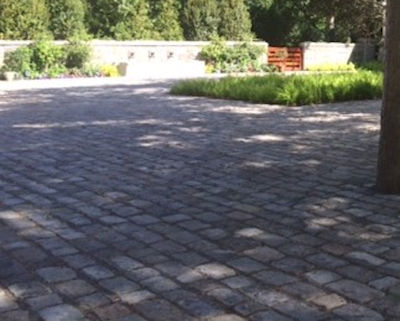 VIEW LARGER
VIEW LARGERJumbo Cobblestones
Granite cobblestone driving court at ocean side estate
Historical Snapshot: Granite Cobblestone History
Most granite cobblestones in the United States actually originated from the other side of the pond. During the late 1800s, the U.S. shipped large quantities of lumber, cotton, tobacco, furs and other goods across the Atlantic to Europe. After ships unloaded their cargo, they needed to be weighed down to ensure safe passage back to America. Cobblestones were a popular choice for ballast.
When the ships reached American ports, the ballast was offloaded and replaced with a new shipment bound for Europe. Cobblestones quickly became a hot commodity for street paving in port cities from St. Augustine, Florida, to Bar Harbor, Maine. What better way to improve uneven, dirt-packed roadways than with an abundant, high-quality building material that arrived by the ton?
Some cobblestones were reused as ballast in canal boats that were preparing to travel westward. Canal boats without cargo needed something to weigh them down in order to pass under low bridges on the canal. As a result, you’ll often find cobblestones in former canal ports like Buffalo, New York, and Pittsburgh, Pennsylvania.
Know the Difference: Cobblestone vs. Sette
Technically, cobblestones are small, naturally rounded rocks—not the quarried granite stones commonly referred to as cobblestone. The rectangular quarried stone generally used for paving roads is actually called a sette or, more commonly, Belgian blocks.
Originally left rough, split face, most settes were worn down over time by the steel-banded wagon wheels and horseshoes that traversed them. On the other hand, new cobblestone placed in roadways today could never be worn smooth in the same manner because rubber car tires are not nearly as abrasive. Original settes—like we offer at Experienced Brick & Stone—are a piece of history that can never be recreated.
Types of Cobblestone
Our historic cobblestones are available in a variety of sizes and colors, each with their own unique story to tell. (You can even purchase an authenticity plaque to document your piece of history.)
The color you see on a stone combines its original color and the patina it has acquired over generations in the road. Often, stones that initially appear similar in color are actually quite different when the patina is removed or the stones are split open to reveal their original coloring. Conversely, another group of stones may vary in color because of their patina, despite originally being the same color.
Cobblestones generally come in four sizes. The smallest are cubes, four inches on each side. Regulation cobblestones are somewhat larger—5 inches wide, 9 inches long and 5 inches thick—with a relatively flat top, despite being worn.
Jumbo cobblestones earn their name: At 4-6 inches wide, 10-15 inches long and 6-8 inches thick, jumbo stones were produced in a cruder manner than other cobbles. As a result, their worn tops are more rounded than the refined regulation stones, and their sides often have protrusions that prevent tight joints when laid as pavers.
To help pedestrians and drivers gain better traction, jumbo cobbles were sometimes removed from the road, split in half and placed back in the road with the rough split side facing up. These are, appropriately, known as half jumbos.
For crosswalks, builders would often use large slabs of stone to provide a smoother pathway for pedestrians, particularly ladies in heals who detested the joints between smaller cobblestones.
You also may see cobblestones with notches cut into the top along one edge. These stones were typically placed along the inside edge of a trolley rail; the notches allowed the flange of the trolley wheels to pass without interference.